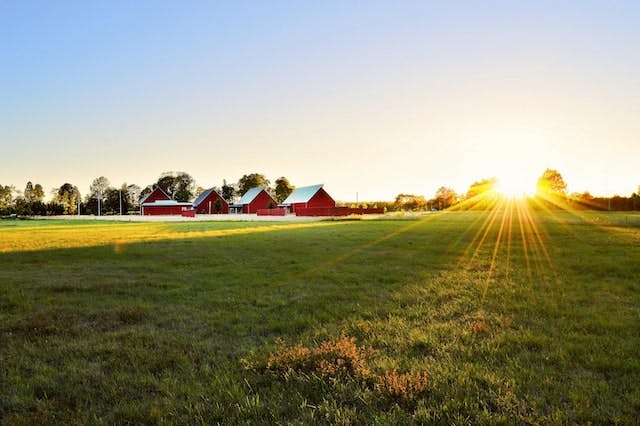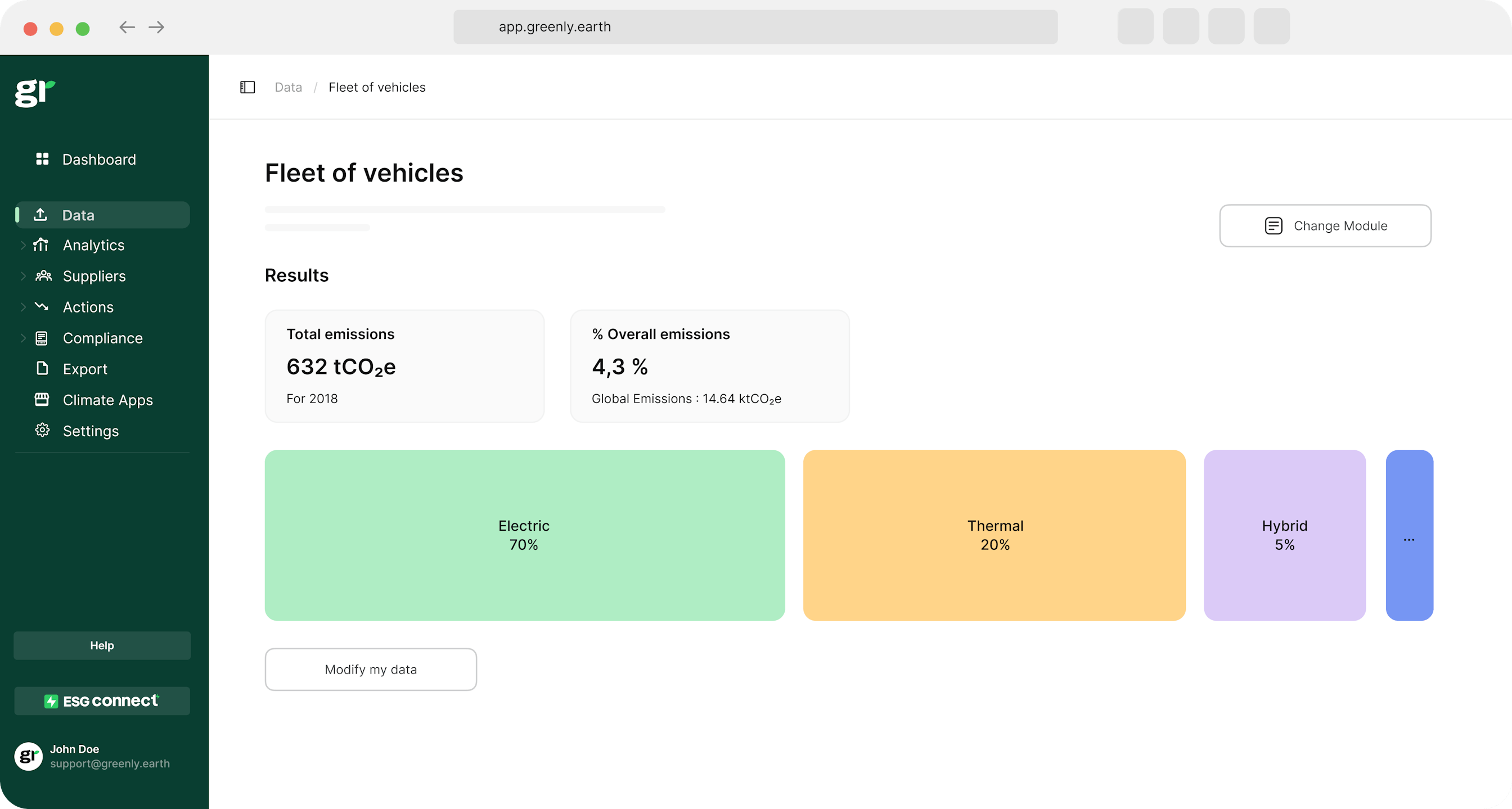ESG / CSR
Industries
What is a Solar Farm and How Does it Work?



As we know, humans are contributing to climate change and the rise of global temperatures. This has been caused by the greenhouse gases emitted by our extensive use of fossil fuels over many decades. We need solutions if we are to ween off these dirty energy sources.
One of the most discussed solutions is solar power. The most efficient production of solar power is on solar farms.
👉 But what is a solar farm, and how do they make use of solar power plants? And how do solar farms work?
What is a solar farm?
If you are familiar with solar panels, you could assume what a solar farm is – a ton of solar panels collected in one area.
A solar farm is also often referred to as:
- solar gardens
- solar power plants
- solar power stations
- solar parks
- community solar farm projects
- large scale solar installations
👉 Solar panels are usually mounted to the ground rather than to a building or other surface (such as rooftop solar panels) – and act as a power grid or an electricity grid, allowing for community solar farms to provide renewable energy.
Oftentimes, businesses, homeowners, or entire nations are unsure whether to invest in solar power or wind energy – here's a table contrasting the differences between these two popular forms of renewable energy.
Comparison of Solar and Wind Power
| Aspect | Solar Power | Wind Power |
|---|---|---|
| Energy Source | Sunlight | Wind |
| Technology | Photovoltaic panels and solar thermal systems | Wind turbines |
| Efficiency | 15-20% for most PV panels | 35-45% for most wind turbines |
| Installation Location | Rooftops, open fields, and deserts | Open plains, hilltops, and offshore |
| Space Requirements | More space per unit of energy compared to wind | Less space per unit of energy compared to solar |
| Intermittency | Dependent on daylight and weather conditions | Dependent on wind speed and weather conditions |
| Environmental Impact | Low, but land use can be significant | Low, but can impact birds and bats |
| Cost | Costs have decreased significantly, making it more affordable | Generally cost-effective, but installation can be expensive |
| Maintenance | Low maintenance; panels typically last 20-25 years | Regular maintenance required; turbines typically last 20 years |
| Scalability | Scalable from small residential to large commercial projects | Scalable, but more suited for large-scale installations |
| Noise | Silent operation | Can produce noise, especially larger turbines |
| Energy Storage | Requires batteries for energy storage | Requires batteries or grid storage solutions |
What are solar farms used for?
👉 Solar farms are used to collect energy from the sun. They are a renewable energy source that can help replace fossil fuels in our energy-consumptive society, limiting our greenhouse gas emissions.
Solar farms are an integral part of the greater fleet of renewable energy resources we will need to rely on in years to come. Solar farms, along with other solar panels, currently produce power sufficient to power 36 million American homes – demonstrating how the solar industry, solar projects, and residential solar installations are growing in the department of energy in the midst of climate change.
Overall, they are very beneficial to limiting greenhouse gas emissions.
What is the main goal of solar power stations?
The main goal of a solar farm, also called solar parks, is to generate electricity in a renewable manner via the use of ground mounted solar panels or solar panel installations – which can not only help companies and homeowners alike to reduce their electricity bill, but the initial solar farm costs to build solar farms could prove as a long-term renewable energy source.
How do solar panels and solar energy work?
Just as plants take sunlight and make it into energy through photosynthesis, solar farms use specially designed technology to convert sunlight into electrical energy.
Currently, there are two dominant solar energy technologies in wide use:
- photovoltaic technology (PV);
- concentrating solar-thermal power technology (CSP).
👉 PV, photovoltaic power stations, is the technology that looks like the classic solar panels you are probably familiar with – which start with solar arrays (a collection of linked solar modules).
PV devices are made up of individual cells that can each produce 1 or 2 watts of power. They are connected in long chains that make up the solar panels.
The panels have glass and plastic surrounding the cells. These materials exist to provide a protective layer for the cells. The glass allows light to pass through and reach the conductors, and helps the cells weather many years of living in the open air. In fact, the lifespan of solar panels installed panel is about 30 years.
👉 CSP is a bit different of a technology – it uses a system of mirrors to reflect sunlight and concentrate it onto receivers that convert the sunlight to heat. But most of the time someone mentions a solar farm, they are probably referring to PV farms.
Solar panel farms are specifically designed to let the solar panels face the direction where they will get the most sun. They are often planned in areas that get a lot of sun, taking into consideration latitude, geography (flatness of area), and weather patterns.
After the energy from the sun is collected by solar farms, it must then by integrated into the energy system in order to be used on the grid by homes and businesses.
💡 Batteries are an essential part of this process – without them, we could not store the energy collected from solar farms to save it for nighttime. Instead, we would have to use all of the solar energy as it arrived to the PVs.
Facts and figures of solar farms
How do solar farms make money?
Solar farms make money by producing energy for the grid.
Energy companies pay businesses and landowners for the energy they provide. There are large companies that own solar farms as well as homeowners. The latter may choose to build their own solar farms, solar gardens, or solar parks – or lease their agricultural land to a solar farm company rather than building a community solar farm themselves, as according to the National Renewable Energy Laboratory, the solar farm cost may be daunting to some.
The solar energy market has been quickly growing across the U.S. as solar has become economically competitive with fossil fuels, increasing the value of solar farms or solar power plant.
Cost of solar farms
There are two different types of costs associated with solar farms – “hard costs” that refer to solar hardware like PV devices and mounts, and “soft costs” that include permitting and financing.
Depending on supply and demand, it can take a while to install a solar farm and get it up and running from when the solar panels are bought. This lag time can raise soft costs.
However, as solar power has become more common, the cost of solar panels has dropped significantly since 2014: by nearly 70 percent. Furthermore, the U.S. government has tax credits available for PV systems.
👉 When it comes to return on investment, solar farms typically have a 10-20% return on investment. The payback period is between 7 and 9 years, depending on the various costs and and where a solar farm is located.
Size of solar panel farms
Solar panel farms can be the size of an acre or smaller, but they tend to be between 10 and 50 acres when on private land. However, utility-scale solar farms are typically 200 acres or larger.
Problems with solar farms
Mining for materials
Sadly, solar power is not as green of an energy source as it may seem. Some of the essential components in the fabrication of solar panels are rare minerals, including indium, gallium, germanium, and tellurium. These minerals must be mined from the ground, typically necessitating the use of fossil fuels, not to mention the fuels needed for handling and processing.
And for solar power to play as big a part in our green future as we need, mining will need to increase significantly in order to keep up with the current power output and solar farms popping up. Indium, for example, will need to be mined as much as 8,000 percent more than it now.
👉 Since solar panels last only about 30 years and mostly cannot be recycled, projections of solar garbage in 2050 are double that of global plastic waste. This is one of the reasons why the benefits of solar technologies and solar installation may be challenged.
Energy storage in batteries
Batteries needed for solar energy do not have a clean track record, either. They require the mining of rare minerals, just like solar panels. Another thing they have in common is the difficulty associated with disposal – only about 5% of batteries used in solar power are recycled.
💡 It takes quite a while for a battery to become a carbon neutral object after requiring so much energy during production.
For example, one battery that can hold enough energy equivalent to a barrel of oil requires the same amount of energy as 100 barrels of oil.
Impact on animals
Solar farms can be have a negative impact animals and surrounding biodiversity. For instance, thousands of birds die yearly from collision or immolation flying near or over solar farms. Luckily, research continues on how to ensure biodiversity and infrastructure can be best support to limit bird deaths due to solar farms.
An example of this is taking extra consideration is into account to ensure solar farms do not utilize land feasible for crop growing or other agricultural purposes.
Solar farms can also be protected by perimeter fencing to keep out intruders, both human and non human – but animals can be trapped under the fences fleeing from prey, impacting ecosystem functioning.
However, it should be noted that solar farms' extent of negative impact on animals is marginal to the threat global climate change poses to ecosystems around the world.
Is it safe to live next to a solar farm?
According to current research, living next to a solar farm does not put you at risk of getting cancer. It can actually lower the risk of lung cancer if it means not living near dirtier energy sources.
👉 It is worth noting the existence of electromagnetic radiation near solar farms – a byproduct of the industrial equipment needed to store the solar energy. But if you do not have electromagnetic hypersensitivity, you shouldn't need to worry about the implications of the radiation.
Likely the biggest risk to your health when living near a solar farm is the potential of mishandled waste. Luckily, this is not a typical occurrence.
Beyond safety, living next to a solar farm can lower your property value. This also depends on where you live, and is not a catch-all rule.
If you would like to know where there is a solar farm near you, the Solar Energies Industries Association (SEIA) has a database of over 5,800 solar power projects where you can find that information. Click this link to see the map.
A greener future with Greenly
We hope you have learned something about solar farms and solar power in this article. If you would like to be a part of our world's shift towards green energy sources, reach out to Greenly.






